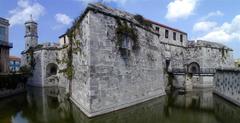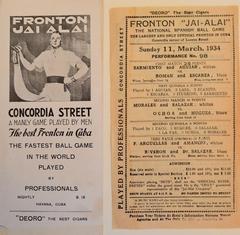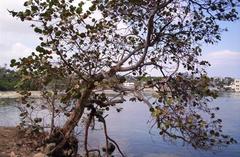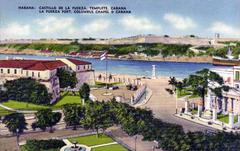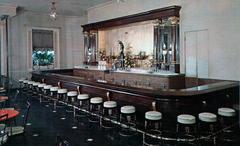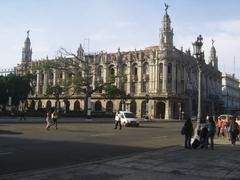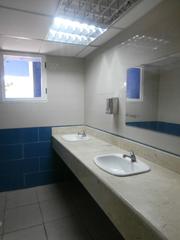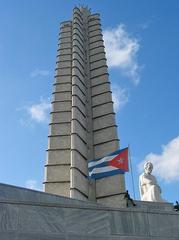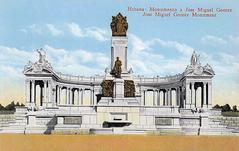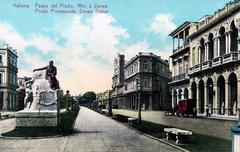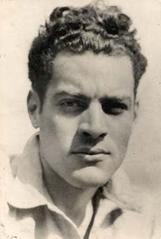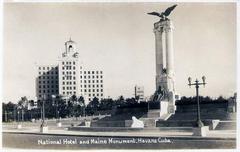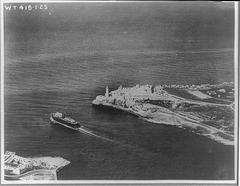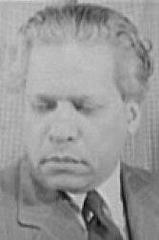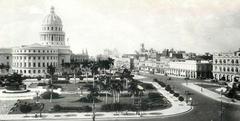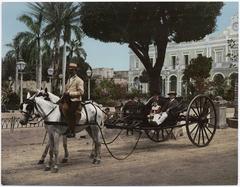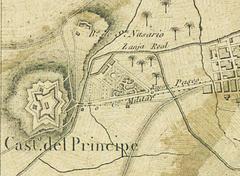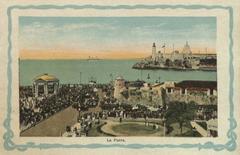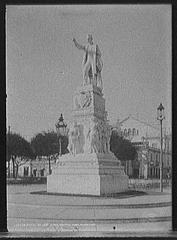Miramar, Havana Province, Cuba: Visiting Hours, Tickets, and Attractions Guide
Date: 14/06/2025
Introduction
Miramar, a prominent neighborhood in Havana’s Playa district, is celebrated for its blend of historical grandeur, architectural elegance, and vibrant cultural life. Originally established in the early 20th century as a haven for Cuba’s elite, Miramar has transformed into a dynamic area characterized by its stately mansions, spacious tree-lined avenues like Quinta Avenida, and a significant diplomatic presence. Today, Miramar not only reflects Havana’s urban expansion and shifting social fabric—especially after the Cuban Revolution—but also offers a wealth of attractions, from cultural centers and museums to lush parks and renowned restaurants.
This comprehensive guide provides essential information on visiting hours, ticketing, notable landmarks, travel tips, and local experiences, ensuring you make the most of your visit to Miramar. Whether you’re drawn by architectural marvels, cultural offerings, or a lively dining and nightlife scene, Miramar promises a memorable Havana adventure. For further insights and updates, consult resources such as Epic Nomad Life, Trip Cuba, and Indicuba.
Table of Contents
- Introduction
- Historical Development and Urban Character
- Miramar After the Revolution
- Visiting Miramar: Hours, Tickets, and Tours
- Top Attractions and Things to Do
- Architectural Highlights
- Cultural and Local Experiences
- Travel Tips and Visitor Safety
- Miramar Presidential Palace: Visitor Guide
- Frequently Asked Questions
- Conclusion
- References
Historical Development and Urban Character
Miramar emerged in the early 20th century as a luxurious residential area for Havana’s wealthy families. Triggered by urban congestion in the city center, affluent residents moved westward, shaping Miramar’s identity with grand mansions, exclusive clubs, and wide boulevards—most notably, Quinta Avenida. This avenue, stretching about ten kilometers along the coast, is renowned for its stately ambiance and rich architectural tapestry, including neoclassical villas, Art Deco homes, and modernist buildings (Epic Nomad Life; Havana Times).
By the 1950s, Miramar reached its zenith of glamour, attracting aristocrats, diplomats, and entertainers. Luxury hotels, casinos, and private clubs flourished, contributing to Havana’s international allure (Epic Nomad Life).
Miramar After the Cuban Revolution
The Cuban Revolution of 1959 dramatically changed Miramar’s social fabric. Many grand estates were nationalized and repurposed for embassies, consulates, and state offices as former residents fled the country (Epic Nomad Life). Despite these changes, Miramar retained its prestige and diplomatic character, with wide avenues and stately buildings now playing host to international delegations, government officials, and cultural institutions (Havana Times).
Visiting Miramar: Hours, Tickets, and Tours
General Access
Miramar is a public neighborhood with no general entrance fee. You can explore its streets, parks, and avenues at any time.
Attraction Hours & Ticketing
- National Aquarium of Cuba: Open Tuesday–Sunday, 9:00 AM–5:00 PM; admission approx. $5 USD (Indicuba).
- Almendares Park: Open daily, 9:00 AM–6:00 PM; free entry.
- Church of Jesus de Miramar: Open for services and sightseeing, 8:00 AM–5:00 PM.
- Model of Havana (Maqueta de La Habana): Open daily, 9:00 AM–5:00 PM; small admission fee.
- Museums and Galleries: Typically Tuesday–Sunday, 10:00 AM–6:00 PM.
- Guided Tours: Various companies offer walking or classic car tours, lasting 1–3 hours; booking and fees required through local operators.
Guided Tours and Accessibility
Many tour operators provide guided walking, cycling, or car tours of Miramar’s highlights. Most public venues are accessible to visitors with disabilities, but always confirm accessibility in advance.
Top Attractions and Things to Do
- Quinta Avenida: The district’s main artery, lined with historic mansions and embassies (Epic Nomad Life).
- Russian Embassy: A striking Stalinist architectural landmark (Trip Cuba).
- National Aquarium of Cuba: Family-friendly marine exhibits and dolphin shows (Indicuba).
- Almendares Park: Ideal for relaxation and picnics.
- Fusterlandia: Nearby Jaimanitas showcases vibrant public art by José Fuster (Epic Nomad Life).
- Karl Marx Theater: Hosts major concerts and performances (Tourist Secrets).
- Casa de la Música Miramar: Popular for live Cuban music and dance (Indicuba).
Architectural Highlights
Quinta Avenida & Mansion Row
Quinta Avenida is the heart of Miramar, lined with stately mansions in styles ranging from Art Deco and Neoclassical to Modernist and Mediterranean Revival (Indicuba). Many of these buildings now serve as embassies and cultural centers. Notable examples include the Casa de las Tejas Verdes and the imposing Russian Embassy (Anywhere.com).
Embassies and Diplomatic Buildings
Miramar is Havana’s diplomatic quarter, hosting the bulk of foreign embassies—including those of Russia, Italy, and Japan—often housed in historic mansions (Anywhere.com).
Modern Developments
The Miramar Trade Center is a modern commercial and shopping hub, offering retail, dining, and business facilities (Anywhere.com).
Cultural and Local Experiences
Museums, Theaters, and Art
- Museo del Ministerio del Interior: Revolutionary history, open Tuesday–Sunday, 10:00 AM–6:00 PM.
- Aviation Museum: Cuban aviation history, open Tuesday–Saturday, 9:00 AM–4:00 PM.
- Art Exhibitions: Held at embassies and cultural centers, often featuring Cuban and international artists (Tourist Secrets).
Gastronomy
Miramar’s paladares and restaurants are among the best in Havana:
- La Fontana: Lush gardens and creative Cuban dishes.
- Vista Mar: Oceanfront seafood.
- La Esperanza: Home-style Cuban cuisine (Indicuba).
- Upscale venues such as Casa Española and Don Cangrejo offer international and Cuban-Creole cuisine.
Nightlife
- Club Tropicana: Iconic cabaret with world-famous shows (in nearby Marianao).
- Dos Gardenias and La Maison: Stylish bars with expertly crafted cocktails.
- Casa de la Música Miramar: Live salsa and timba music.
Shopping & Leisure
- Miramar Trade Center: Shopping and souvenirs (Anywhere.com).
- International Crafts Fair: Artisanal Cuban goods—check schedules for events.
Nature & Recreation
- Marina Hemingway: Water sports, fishing, and yachting.
- Playas del Este: Nearby beaches accessible by taxi or bus.
Community & Local Interaction
Miramar residents are known for hospitality. Engage with locals in cafes or at community events (Tourist Secrets).
Classic Car Tours
Cruising Miramar in a vintage American convertible is a classic Havana experience. Tours can be arranged via local agencies (Tourist Secrets).
Travel Tips and Visitor Safety
Getting Around
Miramar is accessible via tunnels and bridges over the Almendares River (Havana Times). Taxis, ride-sharing apps, and classic car rentals are recommended. Public buses serve the Playa area but do not run along Quinta Avenida (Havana Times). Always confirm taxi fares in advance (Travel Like a Boss).
Accommodation
Options range from luxury hotels (e.g., Meliá Habana, Oasis Panorama, Occidental Miramar) to private casas particulares (Wikipedia). Book in advance, especially during peak seasons (GloboTreks).
Currency & Internet
Only the Cuban Peso (CUP) is used; foreign credit cards (especially U.S.-issued) do not work (The Traveler). Bring cash and exchange at official outlets. Internet is available at hotels and public Wi-Fi hotspots but can be slow; buy prepaid ETECSA cards and download offline maps (GPSmyCity).
Essentials
Due to shortages, bring necessary medications, snacks, and a basic first aid kit (Travel.gc.ca; GloboTreks). Drink bottled water only (Travel Like a Boss).
Safety
Miramar is among Havana’s safest areas, thanks to police and diplomatic presence (EntryCubaForm). Still, safeguard valuables and avoid isolated areas at night. Petty theft and overcharging can occur, so stay alert (Travel Like a Boss).
Power Outages
Cuba has experienced regular power cuts since 2024 (Travel.gc.ca). Carry a flashlight and keep devices charged.
Special Considerations
- LGBTQ+ travelers: Havana is generally welcoming, but public displays of affection are best limited (EntryCubaForm).
- Solo travelers: Cuba is safe for solo visitors; use reputable agencies for tours and accommodation (EntryCubaForm).
- Consular assistance: U.S. Embassy offers limited services (Traveling Lifestyle); check with your country’s embassy for current advisories.
Miramar Presidential Palace: Visitor Guide
Historical Background
The Miramar Presidential Palace, built in the early 20th century, was the official Cuban presidential residence until 1959. The palace is notable for its neoclassical architecture, lush gardens, and historic significance (Official Cuban Cultural Heritage Website).
Visiting Information
- Hours: Tuesday–Sunday, 9:00 AM–5:00 PM
- Tickets: 10 CUC (adults); 5 CUC (children/seniors). Purchase on-site or online.
- Guided Tours: Available daily at 10:00 AM, 1:00 PM, and 3:00 PM; English tours upon request.
Accessibility
The palace is wheelchair accessible, with ramps and elevators available.
Getting There
Reachable by taxi, classic car, or public transit. Prearranged rides are recommended for convenience and safety.
Special Events
Annual festivals and art exhibitions are hosted here; check the official calendar before visiting.
Nearby Points of Interest
- Marina Hemingway: Boating and dining.
- Miramar shopping centers: Local crafts and souvenirs.
- Beaches: Relax on the nearby coastline.
Photography
Photography is allowed (no flash or tripods inside the palace).
Frequently Asked Questions
Q: What are Miramar’s visiting hours?
A: The neighborhood is open all day; most attractions operate 9:00 AM–6:00 PM.
Q: Are tickets required for attractions?
A: Parks are free; museums, aquarium, and palace require tickets.
Q: Is Miramar accessible for people with disabilities?
A: Many sites are accessible, but confirm with venues in advance.
Q: What’s the best way to get around Miramar?
A: Taxis, classic cars, and walking along Quinta Avenida.
Q: Are guided tours available?
A: Yes, bookable via local agencies and hotels.
Conclusion
Miramar stands out as a captivating Havana neighborhood—offering a seamless blend of history, culture, luxury, and local charm. With its grand avenues, architectural treasures, lively culinary scene, and diplomatic aura, Miramar invites travelers to explore Cuba’s past and present in a single stroll. Enhance your experience by planning ahead, utilizing guided tours, and embracing the local rhythm.
For exclusive guides, real-time updates, and personalized itineraries, download the Audiala app and connect with us on social media. Discover more about Havana’s historical sites and make your Cuban journey truly unforgettable.
References
- Epic Nomad Life
- Trip Cuba
- Indicuba
- Anywhere.com
- Havana Times (Miramar overview)
- Havana Times (Photo gallery)
- Travel Like a Boss
- GloboTreks
- Wikipedia
- The Traveler
- Traveling Lifestyle
- Tourist Secrets
- GPSmyCity
- Travel.gc.ca
- EntryCubaForm
- Official Cuban Cultural Heritage Website

